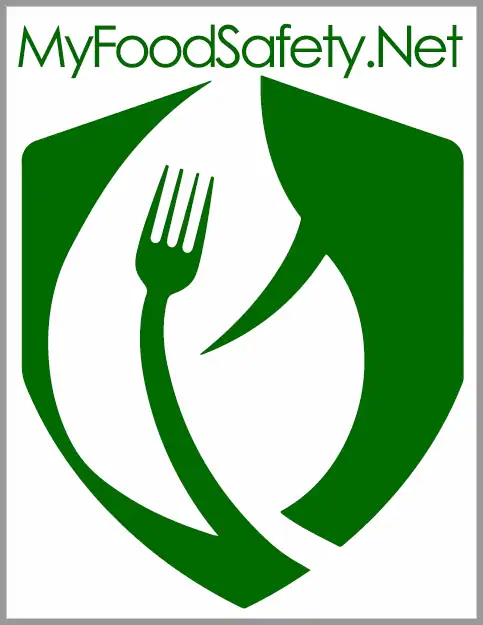Wondering if E1422 – also known as acetylated distarch adipate – is actually safe for people? You’re not alone. This common modified starch turns up in everything from sauces to dairy desserts, yet most of us have no idea what it really is, how it’s made, or what it does to our bodies. The good news? We’ve cut through the jargon, dug into the science and regulations, and pulled together a clear, no-nonsense answer so you can decide whether E1422 belongs on your plate. Let’s get straight to it.
What is E1422
E1422, also known as Acetylated Distarch Adipate, is a type of modified starch used widely in food manufacturing. It falls under the group of starch-based food additives, which are chemically altered to improve their performance in processing and storage.
This additive is made by treating starch — commonly sourced from corn, potato, or tapioca — with acetic anhydride and adipic anhydride. This process changes the structure of the starch, making it more stable against heat, acid, and freezing, which helps maintain the desired texture of food products over time.
In the food industry, E1422 is valued for its multifunctional properties:
- Thickener – improves the consistency of sauces, soups, and fillings
- Stabiliser – prevents separation in dairy products, dressings, and desserts
- Emulsifier – helps mix ingredients that would normally separate, such as oil and water
Because of these qualities, you’ll often find E1422 in processed foods where a smooth texture, extended shelf life, and resistance to temperature changes are important for quality.
Regulatory Status of E1422 Around the World

E1422, also called Acetylated Distarch Adipate, is a modified starch that’s widely recognised and approved as safe by food safety bodies around the globe. Authorities such as the European Food Safety Authority (EFSA) in the EU, the US Food and Drug Administration (FDA), and the Joint FAO/WHO Expert Committee on Food Additives (JECFA) have all assessed it and deemed it suitable for use in food.
In the European Union, E1422 is listed as an approved food additive and can be used within specified limits in many processed foods, including sauces, soups, bakery products, and dairy-based goods. The FDA in the United States classifies it as “generally recognised as safe” (GRAS) when used in line with good manufacturing practice. Across much of Asia, including countries like Japan and Australia–New Zealand (regulated by FSANZ), it is also permitted in various food categories.
The Acceptable Daily Intake (ADI) set by JECFA is given as “not specified”. This means the levels typically used in food are considered safe based on current evidence, and no strict milligram-per-kilogram limit is necessary under normal food manufacturing use. That said, the additive must always meet purity and quality standards to ensure safety.
You’ll see E1422 on food labels simply as “modified starch” or with its E-number. In the UK, its use is regulated under retained EU law, so it meets the same high safety criteria as the rest of Europe.
Health Implications of E1422 Consumption

E1422, also known as acetylated distarch adipate, is a modified starch your body treats much like ordinary starch – it’s broken down into glucose during digestion. Scientific reviews from the EFSA (European Food Safety Authority) and JECFA (Joint FAO/WHO Expert Committee on Food Additives) show that E1422 is generally well tolerated and doesn’t build up in the body.
Digestibility and metabolism
- Similar to natural starch: Broken down by enzymes into sugars.
- Energy source: Provides calories in the same way as other carbs.
- No known effect on metabolism: Doesn’t alter blood sugar levels differently from natural starches when consumed in normal amounts.
Potential health risks
For most healthy people, E1422 causes no problems. A few possible issues:
- Allergic reactions: Extremely rare; more likely in people allergic to the plant source (e.g. maize, potato).
- Intolerance: Large amounts may cause mild bloating or gas, as with other starches.
- Digestive upset: Overconsumption could lead to loose stools in sensitive people, especially young children.
Known side effects
- No evidence of toxicity at approved levels.
- EFSA found no link to cancer, reproductive harm, or organ damage.
- High-dose animal tests showed no harmful effects.
Comparison with other starches
| Feature | Natural starch | E1422 (acetylated distarch adipate) | Other modified starches |
|---|---|---|---|
| Digestibility | Easy | Easy | Easy |
| Allergen risk | Very low | Very low | Varies |
| Stability in cooking | Moderate | High | High |
| Tolerance in large doses | Varies | May cause mild bloating/gas | Similar |
Common Foods Containing E1422
E1422, also called acetylated distarch adipate, turns up in all sorts of everyday processed foods. It’s prized by food makers because it helps keep products smooth, stable, and appealing for longer. In the UK, you might find it in:
- Bakery items – cakes, muffins, pastries, and fillings where it stops the texture from drying out.
- Dairy products – yoghurts, cream desserts, ice creams, and custards to prevent separation.
- Sauces and gravies – instant sauces, salad dressings, and packet soups for a lump‑free consistency.
- Ready meals – to maintain thickness after reheating or freezing.
How to spot E1422 on labels
UK food labels will either show “E1422” or list it as “modified starch” or “acetylated distarch adipate” in the ingredients. If you’re avoiding food additives, it’s worth checking the small print, as it can be in both savoury and sweet products.
Myths vs Facts about E1422
E1422, also known as acetylated distarch adipate, often gets a bad reputation online, but much of it comes from unreliable sources or confusion with other additives. Here’s a quick breakdown of what’s true and what isn’t.
Common Myths
- “E1422 is toxic and unsafe.” – This isn’t backed by science. Food safety authorities like EFSA and the FDA have reviewed it and found it safe within approved limits.
- “It’s a purely synthetic chemical.” – In reality, it’s made from starch (from corn, potatoes, etc.) that’s been slightly modified to make it more stable in cooking and processing.
- “It causes serious side effects for most people.” – There’s no strong scientific evidence for this. Some people with specific starch sensitivities might react, but it’s rare.
Facts
- E1422 is a modified starch used widely in foods like dressings, sauces, and baked goods to improve texture and shelf life.
- Safety checks are done before approval. In the UK and EU, it’s regulated tightly and only used in amounts considered safe.
- It’s digested much the same way as natural starch, so for most people, it passes through the body without issue.
- Like any food additive, overconsumption could upset digestion, but this would require eating far beyond normal amounts found in foods.
Key takeaway: The strong scientific consensus is that E1422 is safe for the general population when eaten as part of a balanced diet, and most of the scary claims online are exaggerated or unfounded.
Recommendations for Consumers
If you eat processed foods, you’ve probably had E1422 without even noticing. It’s widely used and generally recognised as safe, but here’s how to approach it sensibly.
Guidelines for Consumption
- No need to avoid it completely if you’re in general good health, but stick to a balanced diet.
- Limit highly processed foods overall – not just because of E1422, but for better nutrition.
- Keep variety in your diet so you’re not getting large amounts from one type of product.
Who Should Be Cautious
- People with starch allergies or intolerances – rare, but worth watching for symptoms.
- Those with sensitive digestion – large quantities of modified starch may cause bloating.
- Children – moderation is advised as part of keeping additives to a minimum.
- Pregnant women – nothing suggests harm, but avoiding excess processed foods is sensible.
Tips for Reading Food Labels
- Look for “E1422” or “acetylated distarch adipate” on the ingredients list.
- Remember it might also be listed simply as “modified starch” – unless specified, you won’t know which one.
- Ingredients are listed in order of weight, so the higher it appears, the more the product contains.
Choosing Products with or without E1422
The Role of E1422 in Food Quality and Shelf Life
E1422, also known as acetylated distarch adipate, is widely used in UK food manufacturing because it helps products keep their texture and appeal for longer. It’s a modified starch that works well under heat, cold, and acidic conditions, making it versatile for different recipes and processing methods.
In practical terms, E1422 improves:
- Texture – keeps sauces smooth, bakery fillings stable, and dairy desserts creamy without splitting.
- Stability – prevents separation in foods like salad dressings or ready-made meals, even after weeks on the shelf.
- Freeze-thaw resistance – stops watery layers from forming in frozen foods when defrosted.
- Shelf life – extends the period food stays fresh-looking and tasty, reducing waste.
FAQs About E1422 Safety
Is E1422 gluten free
Yes. E1422, or acetylated distarch adipate, is made from starch, usually from corn, potatoes or tapioca. These sources are naturally gluten free. However, if you have coeliac disease or are highly sensitive, it’s still worth checking labels in case the product was made in a factory that also handles gluten-containing ingredients.
Does E1422 cause weight gain
E1422 itself doesn’t directly cause weight gain – it’s a carbohydrate-based thickener used in small amounts. Any effect on weight would come from the overall calorie content of the food it’s in, such as creamy desserts, sauces or baked goods, rather than from the additive itself.
Can E1422 trigger allergies
Allergic reactions to E1422 are very rare. It isn’t classed as a common allergen. Some people with starch intolerance or certain digestive issues may get mild symptoms like bloating if they consume large amounts, but this is uncommon.
Is E1422 safe for children and pregnant women
Based on current research and approvals by food safety authorities such as the EFSA and FDA, E1422 is considered safe for the general population, including children and pregnant women, when eaten within normal amounts found in foods. As with all additives, moderation is best, and those with any medical concerns should check with a health professional.


